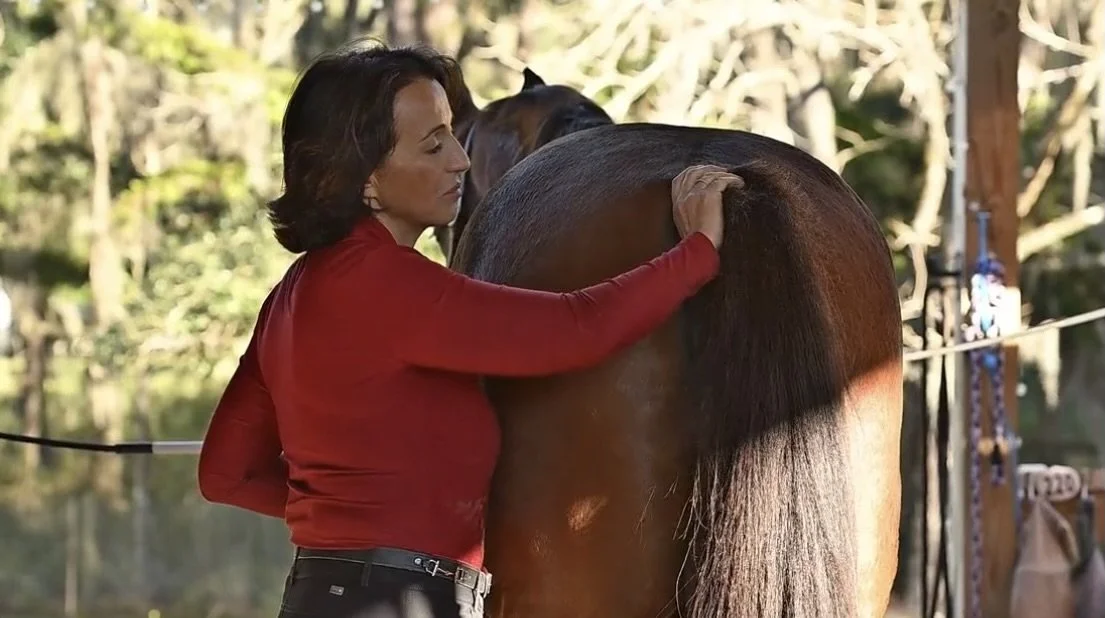Improving Behavior Through Massage
“Through massage we can reestablish trust, and help horses associate human touch with something positive.”
Horses are highly expressive animals that communicate primarily through body language. Intricate non-verbal cues, such as ear position, tail movement, facial expressions, and overall posture, convey a wealth of information about their emotional state and physical well-being. When a horse is experiencing pain or discomfort, it can significantly impact their behavior and may give the impression of misbehavior.
Pain can cause a horse to become irritable, resistant, or exhibit behaviors such as bucking, rearing, refusing to move forward, biting, etc. It is crucial for equestrians to be attuned to their horse's body language, as it serves as a window into their inner world. Recognizing and addressing the underlying pain or discomfort is essential for maintaining a harmonious partnership and ensuring the horse's physical and emotional health.
When pain isn’t addresses or acknowledged, horses can become defensive, fearful, and even aggressive toward people. Pain triggers a self-preservation instinct in horses. They may react defensively or aggressively to protect themselves from perceived threats. This behavior is an attempt to establish personal space and boundaries, and protect themselves from additional pain or discomfort.
Sabrina from Equissage California
In the equine world we are often taught that if they are sound, there is nothing to worry about. What about the horse that pins their ears and tries to bite every time they are approached with a saddle or every time the girth is tightened? This is a communication from that horse that they are protecting themselves, in this case it can be a sign of ulcers, poorly fitting tack and muscular pain that is associated with that poorly fitting tack.
Regular tail swishing during a ride is also a sign of discomfort. Many times this is a sign of back pain, gluteal pain, stifle pain, lumbar pain, and ovarian discomfort in mares. This is regularly overlooked in the horse world or deemed as normal.
Massage is not just a luxury but a valuable tool in maintaining the physical health and psychological health of horses. Massage not only teaches you how to alleviate muscle tension, improve blood circulation, increase range of motion, and reduce stiffness - but it teaches you how to slow down and listen to the horse on a different level. It teaches you another form of communication, another way to hear what they are trying to covey. Alleviating this pain can be the difference between a horse being re-homed because they are “nasty” or “difficult” or they “just hate people”. At some point they learned that they need to protect themselves.
Through massage we can reestablish trust, and help horses associate human touch with something positive.

